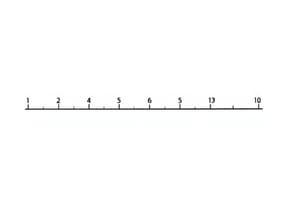Podcast
Questions and Answers
Which scale of measurement assigns numbers to objects for differentiation without implying superiority or inferiority?
Which scale of measurement assigns numbers to objects for differentiation without implying superiority or inferiority?
- Nominal scale (correct)
- Ratio scale
- Interval scale
- Ordinal scale
Which scale of measurement indicates rank or position with meaningful order?
Which scale of measurement indicates rank or position with meaningful order?
- Nominal scale
- Ordinal scale (correct)
- Interval scale
- Ratio scale
In which scale of measurement are the intervals between adjacent categories equal?
In which scale of measurement are the intervals between adjacent categories equal?
- Ordinal scale
- Ratio scale
- Interval scale (correct)
- Nominal scale
What is an example of a nominal scale mentioned in the text?
What is an example of a nominal scale mentioned in the text?
Which scale of measurement shows order like ordinal and equal intervals between adjacent categories?
Which scale of measurement shows order like ordinal and equal intervals between adjacent categories?
Flashcards are hidden until you start studying
Study Notes
- Measurement is the process of applying numbers to objects based on set rules, like measuring height using a tape measure.
- In statistics, there are four scales of measurement: nominal, ordinal, interval, and ratio.
- Nominal scale assigns numbers to objects to differentiate them, like assigning 1 to males and 2 to females without any inherent meaning.
- Example of nominal scale includes gender where numbers are used for differentiation, not to imply superiority or inferiority.
- Another example of a nominal scale is baseball uniform numbers which simply distinguish between players.
- Ordinal scale assigns numbers to objects with meaningful order, indicating rank or position like first, second, third place in a race.
- Interval scale, in addition to having order like ordinal, also has equal intervals between adjacent categories, such as temperature in Fahrenheit.
- In an interval scale, the difference between 78 and 79 degrees is the same as between 45 and 46 degrees, showing equal intervals throughout the scale.
Studying That Suits You
Use AI to generate personalized quizzes and flashcards to suit your learning preferences.




